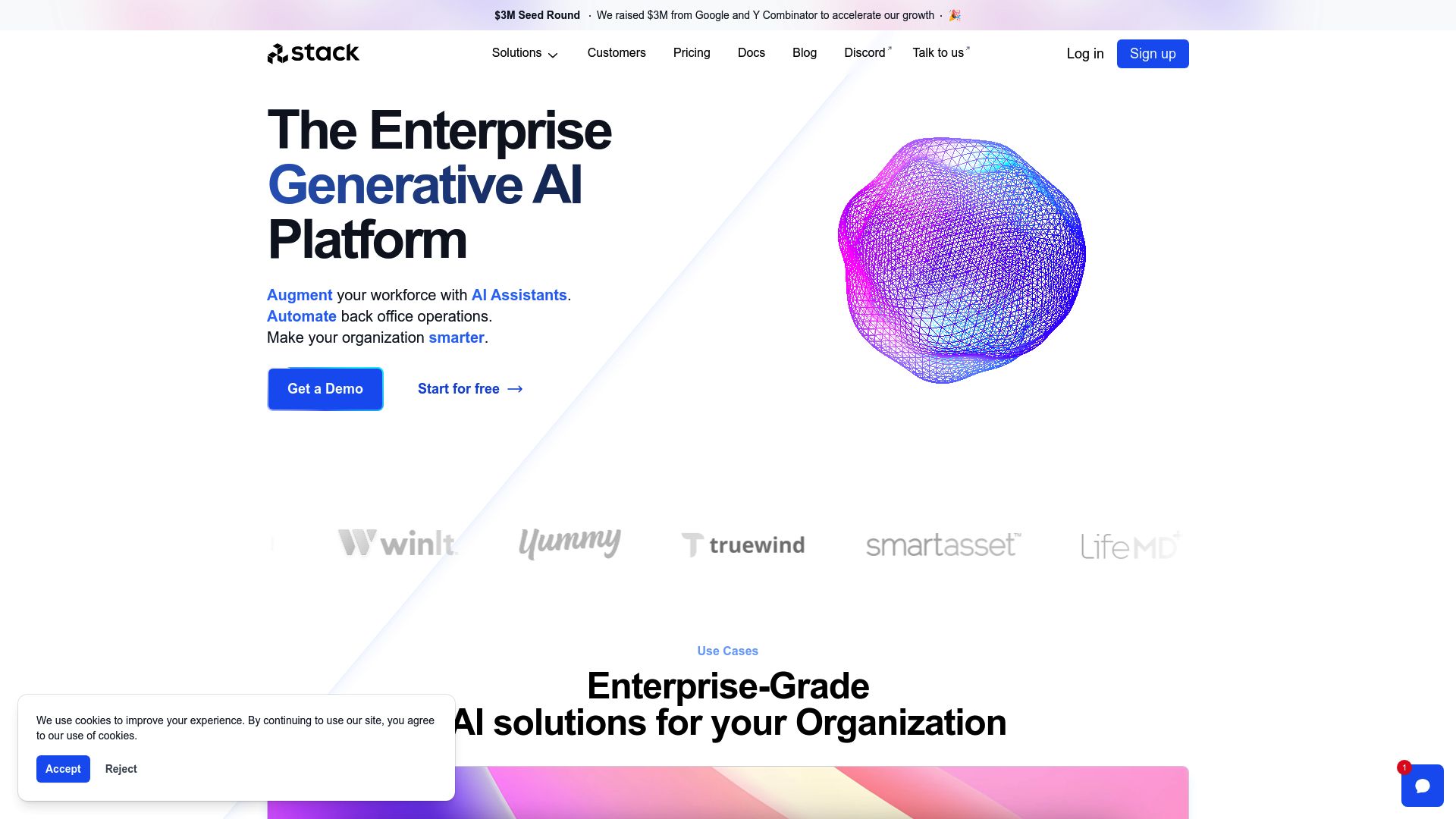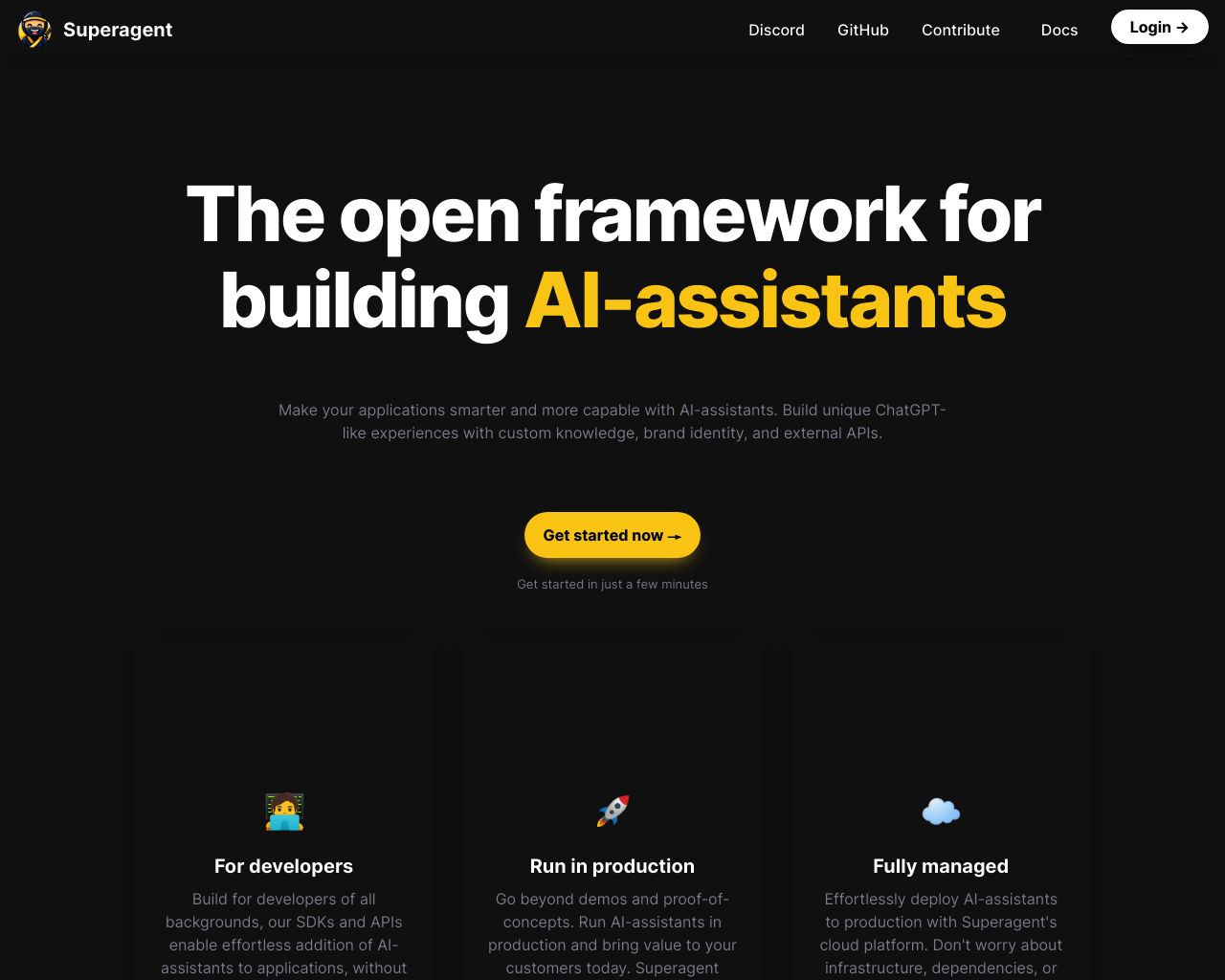Stack AI vs. Superagent: Comparing AI Agent Builders
AI agent builders transform the way organizations harness artificial intelligence, offering powerful tools to create custom solutions without extensive coding. Stack AI vs. Superagent stand out in this competitive field, each bringing unique strengths to the table. Stack AI’s visual interface simplifies complex AI workflow creation, while Superagent’s open-source flexibility caters to developers seeking deeper customization. This comparison delves into their core features, security measures, and integration capabilities, providing crucial insights for businesses navigating the AI landscape. We’ll explore how these platforms stack up against SmythOS, our cutting-edge solution that combines user-friendly design with advanced AI capabilities, offering unparalleled versatility for enterprises and developers alike.
Stack AI Overview
Stack AI empowers users to create and deploy AI-powered workflows and custom assistants without extensive coding expertise. The platform’s low-code interface democratizes access to advanced AI capabilities, enabling businesses to leverage intelligent automation across various industries.


Stack AI’s visual builder streamlines the development process, allowing users to construct complex AI workflows through intuitive drag-and-drop interactions. This approach significantly reduces the barrier to entry for AI implementation, making it accessible to both technical and non-technical professionals.
Stack AI’s visual builder streamlines the development process, allowing users to construct complex AI workflows through intuitive drag-and-drop interactions.
The platform excels in its integration capabilities, supporting connections with popular services like Google Drive, Salesforce, and Slack. This versatility enables seamless incorporation of AI-driven processes into existing business ecosystems. Stack AI also prioritizes security, adhering to SOC 2, HIPAA, and GDPR standards to ensure robust data protection.
While Stack AI offers impressive features, users may face challenges when attempting highly specialized customizations beyond the platform’s pre-built templates. Additionally, as with many AI platforms, the quality of results depends heavily on the input data and proper configuration, which may require a learning curve for optimal utilization.
Superagent Overview
Superagent empowers companies to build custom AI agents for web research, sales, marketing, and project management without coding expertise. The open-source platform enables AI agents to autonomously browse the web, access files, and integrate with tools like Airtable, Salesforce, and various APIs.


Superagent distinguishes itself through simple markup customization, making AI technology accessible to non-experts. The platform offers robust integration options, including an API and SDKs for embedding AI agents into applications. This approach allows businesses to automate complex tasks traditionally requiring significant manual effort and programming.
Superagent distinguishes itself through simple markup customization, making AI technology accessible to non-experts.
Key features include automating sales processes, personalizing marketing efforts through CRM integration, and conducting competitive analysis. Superagent also facilitates private equity research, patent tracking, content aggregation, and talent acquisition by streamlining data collection and analysis.
While Superagent offers powerful capabilities, users should consider potential limitations. Integration complexity with existing systems may require specialized knowledge. Scalability concerns could arise as data processing needs increase. Additionally, the platform’s customization options may not fully meet highly specialized requirements outside standard templates.
Superagent’s positioning in the competitive landscape highlights its focus on democratizing AI usage. By providing an accessible platform for configuring AI agents, it aims to help companies across various industries improve efficiency and maintain a competitive edge. However, users should weigh the platform’s strengths against their specific needs, considering factors like integration requirements, scalability needs, and the level of customization required for their unique use cases.
Feature Comparison
Stack AI and Superagent offer robust AI agent building capabilities, but key differences emerge in their core components and security features. Stack AI provides a more comprehensive visual builder with drag-and-drop functionality, enabling users to create complex AI workflows without extensive coding. Superagent, while user-friendly, relies more on markup customization, potentially limiting options for highly specialized agent configurations.
In terms of security, Stack AI emphasizes enterprise-grade features, complying with SOC 2, HIPAA, and GDPR standards. It offers robust data encryption and IP control mechanisms. Superagent, as an open-source platform, provides flexibility for security implementations but may require more manual configuration to achieve equivalent protection levels. This gap in built-in security features could be significant for organizations handling sensitive data or operating in regulated industries.
Both platforms support integration with various APIs and data sources, but Stack AI’s pre-built connectors for services like Salesforce and Google Drive may offer a smoother experience for businesses heavily reliant on these tools. Superagent’s strength lies in its open architecture, potentially allowing for more customized integrations, albeit with a steeper learning curve. These distinctions highlight the trade-offs between ease of use and customization flexibility that users must consider when choosing an AI agent builder.
Feature Comparison Table
| Stack AI | Superagent | SmythOS | |
|---|---|---|---|
| CORE FEATURES | |||
| Visual Builder | ✅ | ❌ | ✅ |
| Explainability & Transparency | ✅ | ❌ | ✅ |
| Audit Logs for Analytics | ✅ | ❌ | ✅ |
| SECURITY | |||
| Constrained Alignment | ❌ | ❌ | ✅ |
| IP Control | ❌ | ✅ | ✅ |
| COMPONENTS | |||
| Huggingface AIs | ❌ | ✅ | ✅ |
| Data Lakes | ✅ | ❌ | ✅ |
| DEPLOYMENT OPTIONS (EMBODIMENTS) | |||
| Staging Domains | ✅ | ❌ | ✅ |
| Deploy as Scheduled Agent | ❌ | ❌ | ✅ |
| DATA LAKE SUPPORT | |||
| Sitemap Crawler | ❌ | ✅ | ✅ |
| YouTube Transcript Crawler | ❌ | ✅ | ✅ |
Best Alternative to Stack AI and Superagent
SmythOS emerges as the superior alternative to Stack AI and Superagent for AI agent development and deployment. Our platform combines powerful capabilities with unmatched ease of use, positioning SmythOS as the ideal choice for businesses and developers seeking to harness AI’s full potential.
We offer a comprehensive visual builder with an intuitive drag-and-drop interface, surpassing Stack AI’s no-code interface and Superagent’s markup-based customization. This allows users of all skill levels to create sophisticated AI workflows without extensive coding knowledge, democratizing AI development across organizations.
SmythOS emerges as the superior alternative to Stack AI and Superagent for AI agent development and deployment. Our platform combines powerful capabilities with unmatched ease of use…
Our platform boasts unparalleled integration capabilities, supporting a vast array of APIs, AI models, and tools. While Stack AI and Superagent offer some integrations, SmythOS provides a more extensive ecosystem, including pre-built connectors for services like Slack, GitHub, and Stripe. This versatility ensures seamless incorporation of AI agents into existing business processes and workflows.
Security and scalability set SmythOS apart from competitors. We prioritize enterprise-grade security features, including robust data encryption and constrained alignment, addressing the limitations in Superagent’s open-source model. Our platform scales effortlessly to meet growing demands, supporting everything from small-scale prototypes to large-scale enterprise deployments.
SmythOS excels in deployment flexibility, offering options to deploy AI agents as APIs, webhooks, scheduled tasks, or chatbots. This surpasses both Stack AI and Superagent, providing users with unmatched versatility in how they leverage AI across their organizations. Our platform’s ability to handle diverse data sources and formats further enhances its utility across various industries and use cases.
Conclusion
Stack AI and Superagent offer powerful AI agent-building capabilities, each with unique strengths. Stack AI excels in its visual builder and enterprise-grade security features, while Superagent provides flexibility through its open-source nature and markup customization. Both platforms enable businesses to leverage AI for automating complex tasks, but users may face challenges with specialized customizations or scalability.
SmythOS emerges as the superior choice, combining the best of both worlds and addressing their limitations. Our platform offers unparalleled versatility with a user-friendly drag-and-drop interface, extensive integration options, and support for multiple AI models. SmythOS’s “Create Once, Deploy Anywhere” approach allows seamless deployment across various platforms, from APIs to chatbots and scheduled agents.
What sets SmythOS apart is its comprehensive feature set, including advanced capabilities like multimodal interactions, problem-solving prowess, and multi-agent collaboration. We prioritize security and scalability, ensuring enterprise-readiness while maintaining accessibility for users of all technical backgrounds. Our platform’s ability to handle complex workflows, integrate with over 300,000 services, and provide robust debugging and monitoring tools makes it the ideal solution for businesses seeking to harness the full potential of AI.
Experience the future of AI agent development and deployment with SmythOS. Create a free account today and discover how our platform can revolutionize your workflow. For those eager to dive deeper, explore our comprehensive documentation to unlock the full potential of SmythOS’s capabilities. Don’t just adapt to the AI revolution – lead it with SmythOS.
Last updated:
Disclaimer: The information presented in this article is for general informational purposes only and is provided as is. While we strive to keep the content up-to-date and accurate, we make no representations or warranties of any kind, express or implied, about the completeness, accuracy, reliability, suitability, or availability of the information contained in this article.
Any reliance you place on such information is strictly at your own risk. We reserve the right to make additions, deletions, or modifications to the contents of this article at any time without prior notice.
In no event will we be liable for any loss or damage including without limitation, indirect or consequential loss or damage, or any loss or damage whatsoever arising from loss of data, profits, or any other loss not specified herein arising out of, or in connection with, the use of this article.
Despite our best efforts, this article may contain oversights, errors, or omissions. If you notice any inaccuracies or have concerns about the content, please report them through our content feedback form. Your input helps us maintain the quality and reliability of our information.
